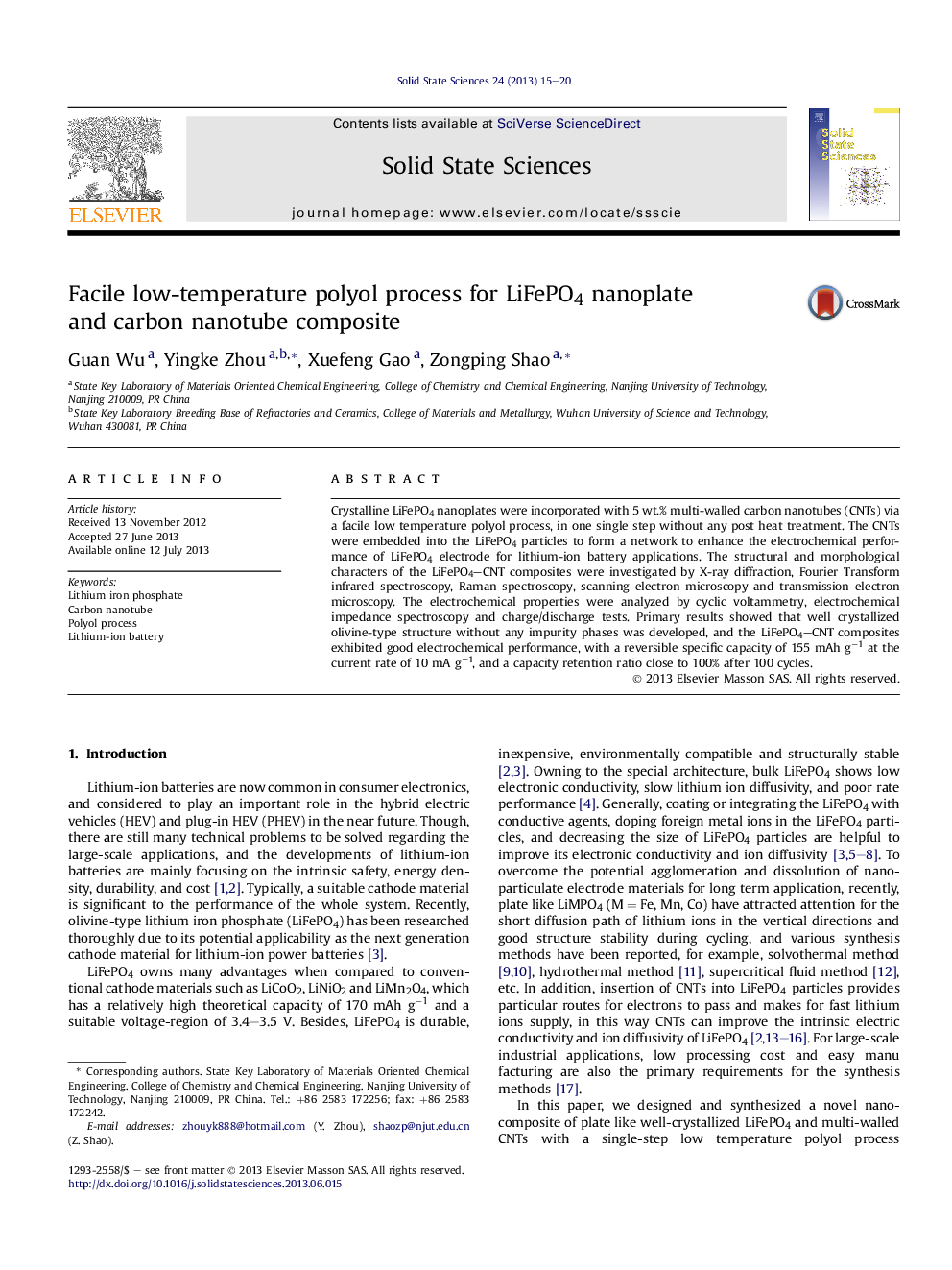| Article ID | Journal | Published Year | Pages | File Type |
|---|---|---|---|---|
| 1504522 | Solid State Sciences | 2013 | 6 Pages |
•Novel LiFePO4 nanoplate and carbon nanotube composites were synthesized.•Crystalline LiFePO4 nanoplates were obtained by the low temperature polyol process.•Carbon nanotubes were evenly distributed and embedded into the plate like LiFePO4 particles.•The composite network structures offer favorable transport speed for both Li ions and electrons.•The facile process is potential to be extended for other composite materials.
Crystalline LiFePO4 nanoplates were incorporated with 5 wt.% multi-walled carbon nanotubes (CNTs) via a facile low temperature polyol process, in one single step without any post heat treatment. The CNTs were embedded into the LiFePO4 particles to form a network to enhance the electrochemical performance of LiFePO4 electrode for lithium-ion battery applications. The structural and morphological characters of the LiFePO4–CNT composites were investigated by X-ray diffraction, Fourier Transform infrared spectroscopy, Raman spectroscopy, scanning electron microscopy and transmission electron microscopy. The electrochemical properties were analyzed by cyclic voltammetry, electrochemical impedance spectroscopy and charge/discharge tests. Primary results showed that well crystallized olivine-type structure without any impurity phases was developed, and the LiFePO4–CNT composites exhibited good electrochemical performance, with a reversible specific capacity of 155 mAh g−1 at the current rate of 10 mA g−1, and a capacity retention ratio close to 100% after 100 cycles.
Graphical abstractFigure optionsDownload full-size imageDownload as PowerPoint slide
